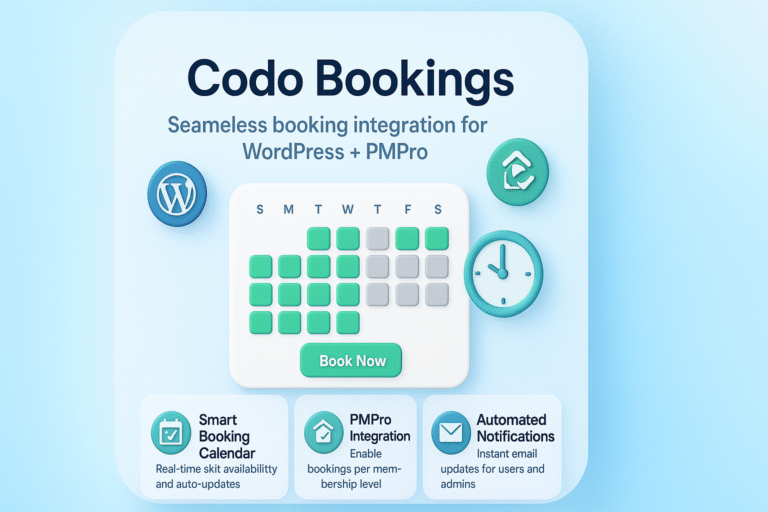Views: 138
Want to create different layouts for specific categories in WordPress? Learn how to design a custom category template in WordPress block themes using the Site Editor and code-based method. Beginner-friendly guide.
✅ Introduction
If you’re using a WordPress block theme and want to show a different layout for posts in a specific category (like “News” or “Tutorials”), you’re in the right place. In this guide, we’ll walk you through two beginner-friendly methods to create a custom category template in WordPress:
- Using the Site Editor (no code)
- Using template files (for developers)
🧠 What Is a Custom Category Template?
A custom category template is a layout that applies only to posts listed in a specific category, for example:
/category/news/shows a 3-column grid/category/tutorials/uses a single-column layout with a sidebar
Block themes make it easy to create these templates without needing custom PHP files or plugins.
✅ Method 1: Using the Site Editor (No Code Required)
This is the easiest way for beginners.
🪜 Step-by-Step Guide
1. Go to Appearance → Editor
- This opens the Full Site Editing (FSE) interface.
2. Click on “Templates” in the left sidebar
3. Click “Add New” → Select “Category”
- You’ll be asked to choose a category from the list.
- Example: Select “News”
4. Design Your Layout
- Add a Query Loop block
- Choose the Grid variation (set columns to 3)
- Inside the Query Loop, add:
Post Featured ImagePost TitlePost ExcerptPost Read MorePost Date
- Optional: Add Columns block for a sidebar layout
5. Save the Template
- Click “Save” in the top-right corner
✅ Result:
Visit /category/news/ — and your new layout will automatically appear for that category!
✅ Method 2: Using Template Files (Advanced but Flexible)
This method is ideal if you’re comfortable editing theme files directly.
🪜 Step-by-Step Guide
1. Open your theme’s /templates/ folder
2. Create a new file:
archive-category-news.html
Replace
newswith your category slug
3. Add custom layout using HTML-based blocks
Example:
<!-- wp:template-part {"slug":"header"} /-->
<!-- wp:group {"layout":{"type":"constrained"}} -->
<!-- wp:columns -->
<!-- wp:column {"width":"75%"} -->
<!-- wp:query -->
<!-- wp:post-template {"layout":{"type":"grid","columnCount":3}} -->
<!-- wp:post-featured-image /-->
<!-- wp:post-title /-->
<!-- wp:post-excerpt /-->
<!-- wp:post-read-more {"label":"Read more"} /-->
<!-- /wp:post-template -->
<!-- /wp:query -->
<!-- /wp:column -->
<!-- wp:column {"width":"25%"} -->
<!-- wp:template-part {"slug":"sidebar"} /-->
<!-- /wp:column -->
<!-- /wp:columns -->
<!-- /wp:group -->
<!-- wp:template-part {"slug":"footer"} /-->
4. Save and refresh
WordPress will automatically load this file when someone visits /category/news/.
🎯 When Should You Use Each Method?
| Method | Best For | Pros | Cons |
|---|---|---|---|
| Site Editor | Beginners, visual users | No code, easy to use | Stored in DB unless exported |
| Template File | Developers, theme authors | File-based control, reusable | Requires FTP or theme editing |
🔍 Final Tips
- Use clear category slugs (e.g.,
tutorials,news) - Combine category-specific templates with Global Styles for better design control
- Export your theme after customizing templates (using the Create Block Theme plugin)
📚 Resources
🧩 Why You Need a Custom Category Template in WordPress Block Theme
Creating a Custom Category Template in WordPress Block Theme helps you design unique experiences for different types of content. Whether you’re running a blog, news portal, or tutorial site, each category may require its own layout. WordPress block themes make this process incredibly flexible using Full Site Editing (FSE).
With category-specific templates, you can:
- Highlight key content in each category
- Improve user navigation and engagement
- Increase SEO value by targeting specific keywords
You don’t need to install third-party plugins—both beginners and developers can take full advantage of native block theme features.
✅ Benefits of Using Custom Category Template in WordPress Block Theme
Using a Custom Category Template in WordPress Block Theme gives you full control over layout and structure. Here are a few standout advantages:
- Better SEO: Tailor layouts for search intent (e.g., grid for news, list for tutorials)
- Improved UX: Readers know what to expect from each category
- Consistency: Keep your site looking organized and purposeful
- Speed Optimization: No need for extra plugins or page builders
🔧 Tools You’ll Need to Create Custom Category Template in WordPress Block Theme
- Site Editor: Best for no-code users
- Template Files: Ideal for developers or theme creators
- Query Loop Block: The heart of dynamic post listing
- Create Block Theme Plugin (Optional): Export your customizations into a child theme
🧩 Conclusion
Creating a custom category template in WordPress block themes is now easier than ever thanks to the Site Editor. Whether you prefer a code-free visual builder or traditional template files, WordPress gives you full flexibility to design the perfect layout for each content category.
Want to take it further? Try adding custom headers, footers, or styles per category!
